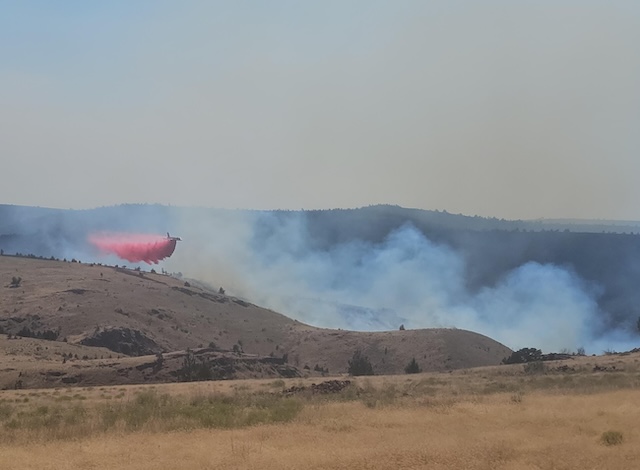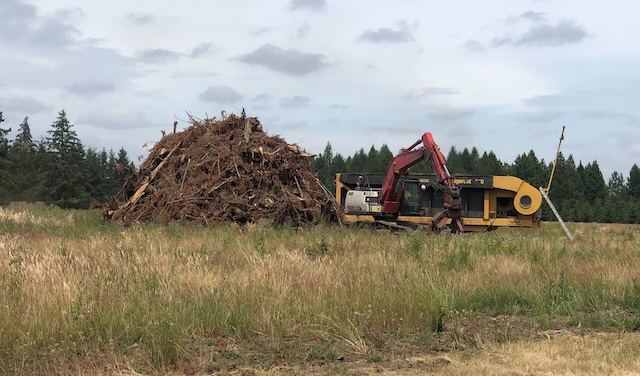Aquatic wonderland awaits in Malaysia
Published 4:00 am Sunday, February 3, 2013
We were in fins and snorkel masks, navigating the thicket of wooden posts that lift the Sipadan-Kapalai Dive Resort above the limpid waters of the Sulu Sea off Sabah, Malaysia. Around us were enough tropical fish to make not a school, but a university and all its departments: a score of yellow-and-black-striped tigerfish, stock-still under the stairs; a massive grouper, presiding over an artificial reef; banner fish, angelfish, starfish, parrotfish, needlefish, you name it, lounging amid corals and darting between rocks.
Then came an underwater yelp, loud enough to make waves, from 16-year-old Jack.
Trending
“Something bit me!” he said after surfacing, pointing to an inchlong welt on his leg that was in the shape of a mouth.
And so something had: a dull brown triggerfish, maybe 18 inches long, which apparently mistook him for the vanguard of a home invasion.
“They can get aggressive around mating time,” our scuba instructor, Alex, said later.
Imagine that: a tropical resort where the fish bite, and the mosquitoes don’t.
Actually, there are no mosquitoes at Kapalai to speak of — and no palm trees, except in pots; no beach, unless you count a slender sandbar that peeks above the waves at low tide; no rental cars, no shopping street, no bars. There is only a web of spacious chalets linked by boardwalks and an ocean stretching to the edge of the sky and beyond.
That, and those amazing fish.
Trending
‘An untouched piece of art’
Kapalai is an artificial island, a diver’s nirvana atop wooden stilts sunk into a shallow reef, 40 minutes by speedboat from Malaysia’s easternmost coast. Water is not just the compelling attraction; it’s the only one. If you are so inclined (and you will be), world-class snorkeling is as easy as duckwalking in your flippers out a chalet door and down the stairs, straight into the sea.
But snorkeling is just the appetizer in an underwater banquet. Kapalai is also the closest habitable spot to Sipadan Island, a tree-shrouded speck that is among the top scuba-diving destinations on Earth. Twenty more minutes by boat transports you to a wonderland teeming with barracuda, sea turtles, sharks, pumpkin-size clams and enough psychedelic fish — 3,000 species, by experts’ reckoning — to dazzle the most jaded ichthyologist.
The World Wildlife Federation has called it one of the most diverse spots on the planet. In 1989 Jacques Cousteau labeled it “an untouched piece of art.”
Members of our family — husband and wife; twins, Jack and Nikki; and 23-year-old Brett — are obsessive getaway planners, poring for weeks over websites and dog-eared Lonely Planets for locations with enough diversions to suit five different tastes and enough solitude to allow a good rest. We had booked rooms at a small island resort with a gorgeous beach and kayaks.
Then fate intervened. A Malaysian monsoon blew us out of that place and into its sister resort Kapalai, 165 miles south. We cursed our luck at being stuck literally in the middle of nowhere. We worried about being round pegs in a square hole full of scuba veterans. And we were certain that a diet of unabated diving would leave us stir-crazy after a couple of days. No beach? Are you kidding?
Kapalai, as we soon learned, is spare but not spartan — its 59 chalets are roomy cathedrals with infinite ocean views from the decks, a cooling wind and nothing but the sound of lapping water and the sway of creaking timbers to lull you to sleep. No restaurant scene here: The food, a fish-heavy mix of Malaysian cuisine and Western favorites like spaghetti for the younger set, is cooked on-site and served at a sprawling buffet. Nor are there televisions, in-room telephones or room service, although Wi-Fi can be had in the combination dining room and lobby. Diversions are limited to a tiny gift shop, a rudimentary bar, a Ping-Pong table and a stack of books on local sea life. Beyond the daily speedboats that deliver fresh guests and remove stale ones, about the only visitors are Malaysian armed forces patrols on the lookout for pirates (more on that later).
Beginners welcome
To our surprise, Kapalai was not just for hard-core divers. There were Chinese families with children in water wings, Aussie couples seeking a romantic interlude and other scuba novices like ourselves. And after a few days of lessons, it became clear that scuba diving imposes its own soothing rhythm on even the most distracted vacationer.
So we fell into what became an enchanting regimen: dive, lunch; dive, relax; snorkel, dinner. Then a spirited bout of the board game Settlers of Catan on the veranda, followed by a stroll to the sunbathers’ deck to watch poisonous lionfish and curious sea turtles gather below, lured by spotlights. And then to bed.
Teenage boredom subsided in a flash; scuba diving proved an almost ideal mix of exercise, adventure and variety. We left Sipadan — diving’s holy grail — until the end, for good reason: While the island has some dive sites suitable for beginners, unpredictable currents can race through others. Novices can be pulled away from their guides or even yanked downward to potentially dangerous levels by rivers they can feel but cannot see.
Kapalai requires beginners to obtain PADI open-water certification (would-be divers must be at least 15 years old), and as is the rule in the Sipadan area, everyone must notch a series of successful dives before making a visit. Although we learned to dive during our trip (and under Alex’s tutelage were exploring subsurface Kapalai on our second day), it’s best to arrive certified and ready to explore places like Sipadan where dives are more demanding.
The marvels of Sipadan
By Day 4, we were cruising to the best dive sites on Mabul Island, a palm-covered diver’s hangout that can be seen from Kapalai. Offshore Mabul is known as one of the world’s best spots for muck diving, which focuses on smaller bottom-dwelling sea creatures. But we found an impressive array of fish and turtles there as well.
Finally, one dawn found us on a speedboat headed for Sipadan.
Geography and geology make this tiny egg-shaped island, just 220 by 550 yards, a diver’s paradise. Sipadan is Malaysia’s only oceanic island, the tip of an extinct underwater volcano just off the continental shelf that rises from the ocean bottom some 2,000 feet below. A reef traces a ring around the island. Nearby, a trench provides a haven for deep-sea fish that follow cool currents upward in search of food. The combination makes an unparalleled scuba experience: on one side, a near-vertical wall teems with morays, clams, turtles and endless varieties of fish. On the other, reef sharks, jack, eagle rays, manta rays and even whale sharks cruise in crystalline waters. Near the surface, the vast fringing reef is home to fabulous corals and brilliant fish.
Sipadan’s stellar reputation almost proved its undoing. By the 1990s, five resorts pocked the island, and clumsy divers and sewage runoff threatened to wreak havoc on the corals and marine life. But in 2000, the island won an improbable reprieve: A band of Abu Sayyaf guerrillas, Islamic separatists from the southern Philippines, raided the camps and kidnapped 21 people, including 10 tourists. The group was freed months later after Libyan leader Moammar Gadhafi paid a $25 million ransom. But nervous divers gave Sipadan a wide berth and a respite from damage for some time afterward.
Four years later, Malaysian authorities, awakened to the tourism value of an untouched Sipadan, ordered the resort operators and their camps off the island. Today fishing is banned within one kilometer of the shore, and diving is limited to 120 visitors a day — a vast improvement in protection, although too meager for environmentalists who fear the island can’t sustain even that procession of tourists.
Back for more
Yet after a day of diving, it is hard to say no to a second helping. Many of the island’s 15 or so dive sites promise something unique: At the aptly named Barracuda Point dive site, whorls of barracuda chase one another in a huge vortex, a pinch-yourself scene unlikely to be repeated in a lifetime. At Turtle Patch, sea turtles glide by within arm’s reach. Just a few yards’ swim from Sipadan’s coral-sand beach, hammerheads sometimes gather mornings at the Dropoff, a limestone cliff mere feet from the island jetty that plunges to the seafloor. Drift diving — letting the express currents carry you from view to view — is the common way to see Sipadan’s marvels. To stop and enjoy the view, grab an outcropping of rock or another diver and hang on — if you can.
For us, the boat ride back to the chalet came all too soon; a farewell to Kapalai followed shortly after. But not for long — four months later, we returned for another look.
We still meticulously plan our journeys. But we also keep in mind what John Barth once wrote about another traveler and another destination: “You don’t reach Serendib by plotting a course for it. You have to set out in good faith for elsewhere and lose your bearings … serendipitously.”
Even if you run into a few triggerfish along the way.








